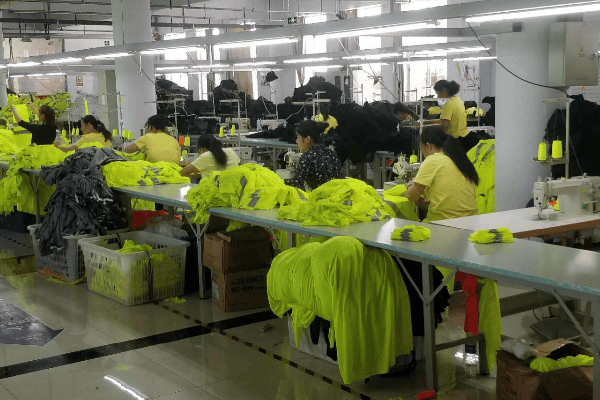Redefining Denim with Cutting-Edge Production Methods
Denim has long been a staple in fashion, symbolizing durability, versatility, and timeless style. However, as sustainability and innovation become central concerns in the textile industry, traditional denim production methods are being reimagined. Cutting-edge technologies and eco-conscious practices are transforming the way denim is manufactured, offering a fresh perspective on this classic fabric. By integrating advanced techniques, the industry is reducing environmental impact while enhancing quality and design possibilities.

One of the most significant advancements in denim production is the adoption of laser finishing. Traditionally, distressing denim required extensive manual labor, chemical treatments, and water usage. Laser technology now allows for precise fading, whiskering, and hole creation without harmful chemicals or excessive water consumption. This method not only speeds up the process but also ensures consistency in design, reducing waste and energy use. Brands embracing laser finishing are setting new standards for efficiency and sustainability in denim manufacturing.
Another revolutionary approach is the use of ozone washing. Conventional denim washing relies on large volumes of water and toxic chemicals to achieve desired shades and textures. Ozone washing, however, utilizes gas to bleach and soften fabric, drastically cutting down water usage and eliminating the need for harsh chemicals. This method not only preserves the integrity of the denim but also significantly reduces the environmental footprint of production. As more brands adopt ozone washing, the industry moves closer to a greener future.
Recycled and organic materials are also reshaping denim production. Traditional cotton farming is resource-intensive, often involving pesticides and excessive water consumption. In response, manufacturers are turning to organic cotton, which is grown without synthetic chemicals, and recycled denim, which repurposes post-consumer waste into new fabric. Innovations in fiber blending, such as combining recycled cotton with Tencel or hemp, create durable yet sustainable denim options. These materials not only lessen environmental harm but also appeal to eco-conscious consumers.
Digital design and 3D prototyping are further revolutionizing denim production. Designers now use software to create virtual samples, minimizing the need for physical prototypes and reducing material waste. 3D modeling allows for precise adjustments before production begins, ensuring optimal fit and style. This digital shift not only accelerates the design process but also enhances creativity, enabling unique textures and patterns that were previously difficult to achieve. By integrating these technologies, brands can respond faster to trends while maintaining sustainable practices.
Waterless dyeing techniques are another breakthrough in denim innovation. Conventional dyeing processes consume vast amounts of water and release harmful pollutants. New methods, such as foam dyeing and CO2 dyeing, apply color without water, drastically reducing waste and contamination. These techniques also offer vibrant, long-lasting hues, proving that sustainability does not compromise quality. As water scarcity becomes a pressing global issue, such advancements are critical for the future of denim production.
The rise of biodegradable denim marks another milestone in eco-friendly fashion. Researchers are developing denim made from natural fibers that decompose at the end of their lifecycle, addressing the problem of textile waste. These biodegradable options provide the same durability and comfort as traditional denim while ensuring minimal environmental impact. As consumer demand for sustainable fashion grows, biodegradable denim is poised to become a mainstream choice.
Automation and artificial intelligence (AI) are also optimizing denim manufacturing. Smart factories equipped with AI-driven machinery can predict trends, streamline production, and minimize errors. Automated cutting and sewing reduce fabric waste, while AI algorithms enhance supply chain efficiency. These technologies not only lower costs but also support ethical labor practices by reducing reliance on manual labor in hazardous conditions. The fusion of AI and denim production exemplifies how innovation can drive both profitability and sustainability.
Consumer awareness is a driving force behind these advancements. Today’s shoppers prioritize transparency, demanding to know how their clothes are made. Brands that embrace cutting-edge production methods and communicate their sustainability efforts effectively gain a competitive edge. Social media and digital platforms amplify this shift, encouraging more companies to adopt eco-friendly practices. The denim industry’s evolution reflects a broader movement toward responsible fashion, where style and sustainability coexist.
Looking ahead, the future of denim lies in continuous innovation. From lab-grown indigo to self-repairing fabrics, researchers are exploring groundbreaking possibilities. Collaboration between scientists, designers, and manufacturers will be key to unlocking these advancements. As technology progresses, denim will not only retain its cultural significance but also become a leader in sustainable fashion. The fusion of tradition and innovation ensures that denim remains relevant in an ever-changing industry.
Global logistics
It can be shipped worldwide
About the MOQ
Minimum order quantity of 200 pieces
Support 24/7
Call us:(+86)136 6980 8954
Free sample
200 pieces MOQ Free sample







Customized product message